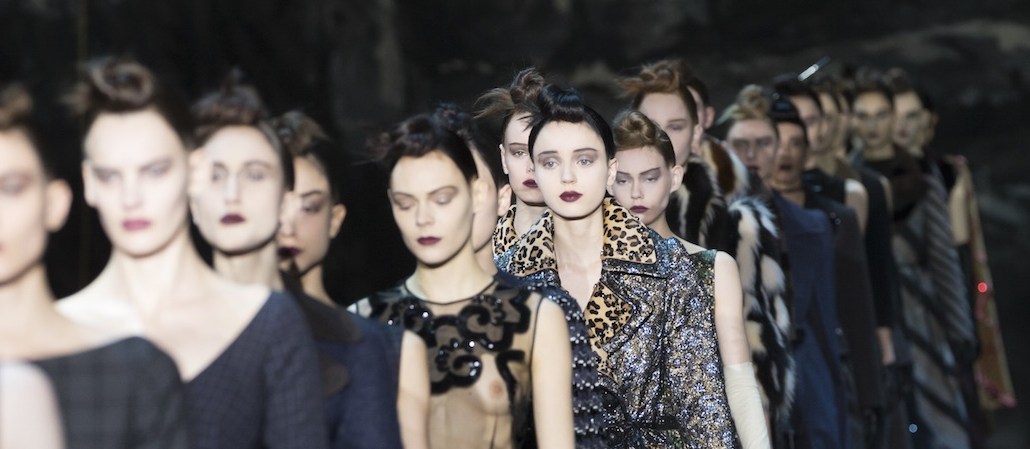
As fashion brands feel the pressure to democratize and speed up, one way they’re making themselves more accessible is Snapchat. The latest to jump on the bandwagon is Marc Jacobs, which Tuesday night announced that it would launch its Snapchat account Thursday in time for its Fashion Week show.
The brand promises to provide behind the scenes and exclusive content to early followers.
It’s been a long time coming: In September, fashion week brands took a more open-door approach to their shows. Alexander Wang, for example, used Snapchat to invite followers into his store for an event. Burberry, which has long been at the forefront of digital marketing, was out of the gate early on Snapchat too, debuting its account at London Fashion Week last year. Louis Vuitton, Stella McCartney and Valentino have all used Snapchat in the last few months to show the behind-the-scenes of their shows.
“Most fashion companies realize that social networks and user-generated voices are significant to communication today and the pro argument is that it’s better to be there than not,” said Sucharita Mulpuru-Kodali, analyst at Forrester. “They’ve also seen other companies do it and get positive PR with little backlash or negativity so it seems like it would have a positive ROI, albeit a small one from the customer base likely to be on Snapchat.”
For the Marc Jacobs brand, this kind of democratization is also happening on the product perspective. It recently started offering a range of more modestly priced accessories ($300 to $600) as part of a larger restructuring ahead of a potential IPO for the company. The brand has also been putting more products on department store floors. “We were very much on the contemporary floor and will be shifting to the designer positioning,” CEO Sebastian Suhl, told WWD. “It’s a designer brand. It’s one that, again, is the only designer brand able to market most of its product at a democratic price point.”
Fashion brands have historically operated behind a velvet rope to maintain a sheen of exclusivity. But the fact that Snapchat’s 7 billion video clips are seen primarily by the coveted 18 to 24 demographic has made it easier to get over that hurdle. For its part, Snapchat has also made it a point to court fashion brands, including setting up a fashion partnerships team that shows these companies what they can achieve from the platform. Joanna Coles, editor-in-chief of Cosmopolitan, joined the board of directors at Snapchat in early December.
The upside of Snapchat is also that it commands comparatively few resources but is able to reach potential customers or even future ones. “It’s just relatively inexpensive marketing to an aspirational customer and it doesn’t require much expense to manage, maybe the part time support of a junior marketing person or intern,” said Mulpuru-Kodali.
The fashion world is also catering to a culture of immediacy in other ways, namely by tweaking its model so it offers more “buy now” options as collections are shown, rather than having to wait months to do it. Brands like Burberry, Tom Ford and Tommy Hilfiger have also whittled down shows, untying them to seasons and showing only two collections a year.
Photo via lev radin / Shutterstock.com
More in Media

What publishers are wishing for this holiday season: End AI scraping and determine AI-powered audience value
Publishers want a fair, structured, regulated AI environment and they also want to define what the next decade of audience metrics looks like.

Media giant Essence launches a marketplace for Black women-led brands
Essence has launched WeLoveUs.shop, a new online marketplace dedicated to Black women-led brands.

In Graphic Detail: The state of AI referral traffic in 2025
The stats reveal a new audience pipeline forming outside of traditional search and social platforms.





